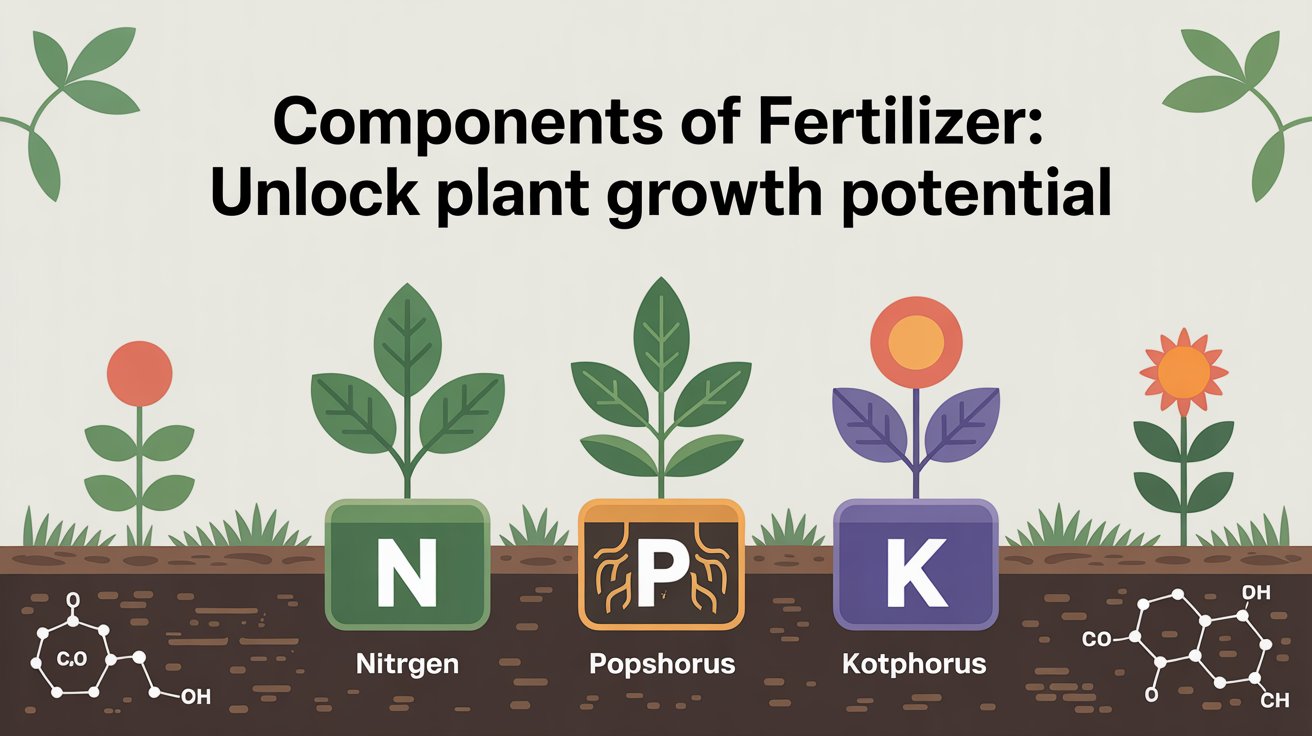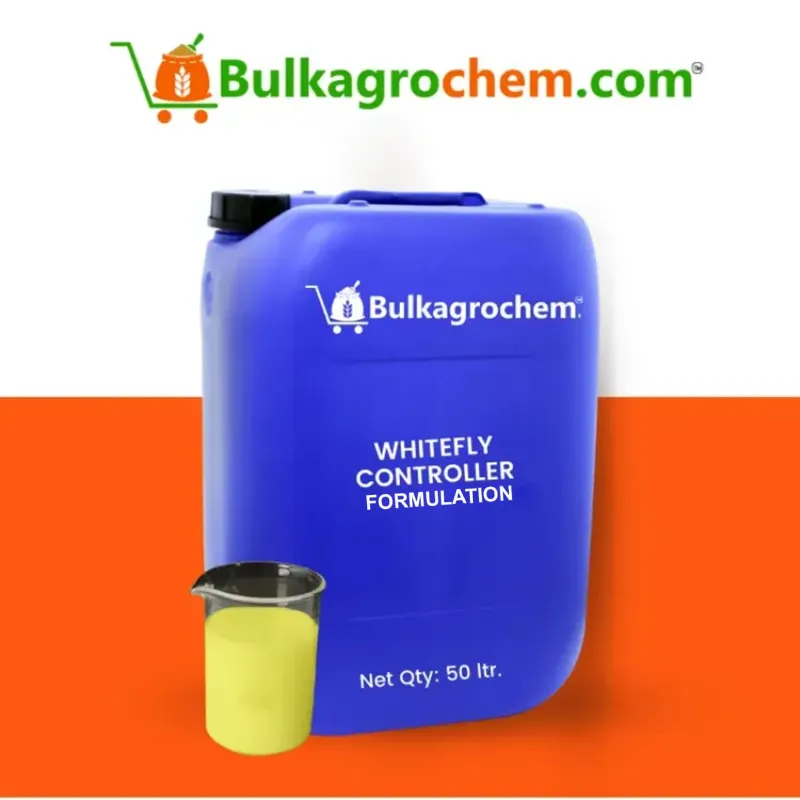Fertilizer is an important aspect of working in modern gardening and farming, providing the needed nutrients for strong plant and crop health. Understanding fertilizer composition provides information for gardeners and farmers to utilize fertilizer to ensure nutrient availability for optimal plant growth and productivity.
The 3 fertilizer components (Nitrogen, Phosphorus, and Potassium) have different and essential functionality in regard to the stages of plant development. Nitrogen supports leaf and stem growth, phosphorus provides root development and flower formation, and potassium supports plant vigor, as well as resistance to diseases. A balanced group of these nutrients would be the basis of nutrient-based fertilization strategies.
However, in addition to the 3 more common nutrients, fertilizers usually include secondary nutrients (calcium, magnesium, and sulfur) and trace elements (iron, manganese, zinc, and boron). The components in fertilizers can not only improve soil health, but also support photosynthesis, and improve plant metabolism. Good combinations of fertilizer components can increase crops yields, soil health and maintain garden differentiated over time
Introduction: Why Understanding Components of Fertilizer Matters
For gardeners and farmers who wish to assist plant development while maintaining soil health, the importance of the components of fertilizer cannot be overstated. Fertilizers contain the nutrients those plants need, in just the right amounts! If you understand the components of fertilizers you can give your plants exactly what they need for growth, without applying too much fertilizer, which may hurt the plant, or the environment.
Importance of Components in Fertilizer for Plant Nutrition
Fertilizers have three components—or macronutrients—that are key to supporting plant nutrition: Nitrogen (N), Phosphorus (P), and Potassium (K). Nitrogen helps plants with their leafy growth, phosphorus aids with root formation and flowering, and potassium helps plants with resilience and quality of fruit. The secondary macronutrients: calcium, magnesium and sulfur, and the micronutrients: iron, zinc, boron, also support plant growth through enzyme activity, photosynthesis, and overall plant vigor. Understanding what components are in the fertilizer allows you to manage nutrients that are prescribed to meet each plant's unique biology.
How Fertilizer Components Affect Soil Health and Growth
Each fertilizer component will interact with soil in its own way. While nitrogen can increase microbial activity, it will leach from the soil if you apply too much. Phosphorus binds to the soil particles, which assists in transferring energy from the roots. Potassium works on the plants' ability to manage water and manage stress. All secondary and micronutrient components will improve soil health over time so that plants grow sustainably. If you remember to balance fertilizer application to replenish nutrients while still keeping the soil fertile, you have a sustainable garden or farm.
Benefits of Knowing 3 Components of Fertilizer for Optimal Gardening
By knowing the 3 components of fertilizer - N, P, and K - gardeners can:
- Apply nutrients efficiently, and reduce wasted fertility.
- Encourage plant growth, flowering, and fruiting, and
- Preserve the soil fertility and structure over the long term.
- Avoid the most common concerns for gardeners, such as nutrient burn or nutrient deficiency.
By mastering the components of fertilizer, gardeners and farmers can make informed decisions, apply nutrients effectively, and achieve healthier plants with higher yields while maintaining sustainable soil management practices.
The Big Three: Nitrogen, Phosphorus, and Potassium (NPK)
NPK is the foundational view for almost all fertilizers and represents the 3 components in fertilizer: Nitrogen (N), Phosphorus (P), and Potassium (K). Nitrogen, phosphorus, and potassium are responsible for all plant growth with NPK fertilizers that will provide balanced growth and development; strong root systems; many flowers and/or fruit, etc. Knowing what each of these components do for plants will help gardeners and farmers apply fertilizer releases to maximize benefits.
Nitrogen: Key Component for Leaf and Stem Growth
- Role: The nitrogen component is responsible for vegetative plant growth. Growth of nice green leaves and strong stems come from protein and chlorophyll production that synBefore this formulate.
- Application Tip: Nitrogen-rich fertilizer is best applied when the plant is actively growing so that the greatest amount of leaf will develop; but not so much nitrogen it will delay flowering because of too much vegetative growth.
- Sources: Urea, Ammonium nitrate, and Ammonium sulfate are common sources of nitrogen.
Phosphorus: Essential for Root Development and Flowering
- Function: Phosphorus encourages the development of the root system and the process of flowering and developing fruit. It is an ingredient in ATP which is the energy currency of the plant's growth and metabolism, and therefore dew essential for the growth of plants.
- Application Tip: Phosphorus is best applied shortly after planting, and again when it is underway flowering, as this is the stage where you will strengthen the root structure, and improve the quality of the blooms.
- Sources: Single Super Phosphate (SSP), Diammonium Phosphate (DAP).
Potassium: Supports Fruit Formation and Disease Resistance
- Function: Potassium enhances the quantity and quality of fruit developed. Potassium gives plants resilience to disease, and helps with regulating water uptake into plants making their overall production system much more efficient.
- Application Tip: Potassium fertilizer can be applied during the flowering and fruiting stages of production to promote maximum benefit, but should be limited as over use may unusable other nutrients provided in the soil.
- Sources: Muriate of Potash (MOP), Sulfate of Potash (SOP).
Secondary Nutrients: Calcium, Magnesium, and Sulfur
Along with the three components of fertilizer (NPK), the secondary nutrients calcium (Ca), magnesium (Mg), and sulfur (S) also have a place in fertilizer in order to facilitate good plant growth and good health for soil as well. These nutrients help with structural stability of cell walls, enzyme activity, and protein formation, in assisting the primary nutrients for balanced growth.
Calcium in Fertilizer: Strengthening Plant Cell Walls
- Role : Calcium is a critically important element in the development of stronger cell walls, which help to add rigidity to the plant and prevent disorders such as blossom end rot in fruits.
- Benefits: Agriculture success can be linked to good root and leaf development, good pathogen resistance, and the ability to take up and use soil nutrients.
- Sources: Lime, Gypsum, Calcium Nitrate.
Magnesium: Vital for Chlorophyll Production
- Role: Magnesium is a key part of chlorophyll, the pigment in a leaf that allows photosynthesis.
- Benefits: Increases energy production in the leaf, makes healthy green leaves, and allows fast carbohydrate synthesis—together leading to better overall plant health.
- Sources: Magnesium Sulfate (Epsom Salt), Dolomite Lime.
Sulfur: Enhancing Protein Formation and Soil Health
- Role: Needed by plants for amino acids, enzymes, and vitamins.
- Benefits: Increases protein level in fruit and vegetables, improves flavor, and allows the best use of nitrogen. Also, gains great value for microbial activity.
- Sources: Elemental Sulfur, Sulfate of Potash, Ammonium Sulfate.
Micronutrients in Fertilizers: Trace Elements That Matter
Although fertilizers contain three components (NPK) that are the basis of plant growth, micronutrients are important components of fertilizers that influence such processes as enzymatic processes, photosynthesis and reproductive processes. Micronutrients are essential nutrients, meaning they are needed in smaller amounts, and may play an integral role in affecting overall plant health, yield, and quality.
Iron, Zinc, and Manganese: Improving Photosynthesis and Growth
- Iron (Fe): is essential to the chlorophyll synthesis process and electron movement in photosynthesis. Iron deficiencies may lead to chlorosis (yellowing of the leaves) and decreased growth.
- Zinc (Zn): involved in supporting enzyme action, protein synthesis, and hormone regulation necessary for stem elongation and leaf expansion.
- Manganese (Mn): involved in photosynthetic reactions and nitrogen metabolism to promote growth and a green canopy.
Copper, Boron, and Molybdenum: Supporting Reproduction and Enzyme Functions
- Copper (Cu): Essential for reproductive growth, lignin formation in cell walls, and activation of enzymes that drive photosynthesis.
- Boron (B): Supports flower and fruit development, seed formation, and sugar transport within the plant.
- Molybdenum (Mo): Important for nitrogen fixation and conversion of nitrate to ammonium in plants, enhancing protein synthesis.
How Proper Micronutrient Balance Boosts Overall Plant Health
- Promotes optimum enzyme function and metabolic processes.
- Prevent disorders caused by deficiencies, such as stunted growth, insufficient flowering and fruit set.
- Will work in conjunction with primary nutrients (NPK) and secondary nutrients by providing a balanced nutrient package for healthy, productive crops.
Synthetic vs. Organic Fertilizer Components
When making a comparison of whether to use synthetic or organic fertilizer sources, it is helpful to understand what the components of fertilizer are. The three components of fertilizer (NPK) supply essential macronutrients to plants, however the source of the nutrient (chemical or organic) influences nutrient release into the soil, soil health and sustainability in the long-term.
Components in Fertilizer: Chemical vs. Organic Sources
- Synthetic Fertilizer Components: Synthetic fertilizers have nutrients derived from chemical compounds and they have very specific concentrations of nitrogen, phosphorus and potassium. Synthetic fertilizers are quick-release fertilizers that are soluble and provide quick, and instant plant availability. Examples include urea (N), superphosphate (P), potassium chloride.
- Organic Fertilizer Components: organic fertilizers have components of plant and animal material like compost, manure, bone meal, and green manure. Organic fertilizers are slow release and provide beneficial benefits to soil structure and microbial activity.
Pros and Cons of Synthetic Fertilizer Components
Pros:
- Nutrients become available to plants quickly.
- Predictable NPK ratios allow plans to become more precise.
- Straightforward to apply large quantities of fertilizer.
Cons:
- May eventually create soil acidification and less microbiological activity.
- Potential for nutrient runoff and polluting water systems.
- May have to be applied several times to stave off nutrient leaching.
Advantages of Organic Components in Fertilizers for Soil Sustainability
- Improves soil fertility over the long-haul by adding organic matter.
- Will support soil microbiology that benefits healthy roots
- Reduces exposure to chemical inputs in farming systems, thus rendering the farming practice more environmentally friendly.
- Improves soil water holding capacity and reduces erosion.
FAQs
Q1 What are the main components of fertilizer?
The key ingredients of fertilizer are nitrogen (N), phosphorus (P), and potassium (K) that supply the necessary nutrients to support plant growth.
Q2 Why are the 3 components of fertilizer important for plant growth?
The 3 ingredients of a fertilizer support leaf and stem growth (N), root growth and flowering (P), and fruit development and disease resistance (K).
Q3 How do secondary nutrients affect soil and plant health?
Secondary nutrients such as calcium, magnesium and sulfur have a positive impact on soil structure, the action of enzymes, and the overall health of the plant.
Q4 What are the essential micronutrients in fertilizer?
Micronutrients such as iron, zinc, manganese, boron, copper, and molybdenum are necessary compounds that assist with the process of photosynthesis, reproduction, and functioning of enzymes.
Q5 Should I choose organic or synthetic fertilizer based on components?
Select according to your goals: synthetic fertilizers will provide exact, soluble composts in your fertilizer; whereas organic fertilizers will assist with improving soil health and nutrient availability in a long term timeframe.
Conclusion: Mastering Components of Fertilizer for a Thriving Garden
When it comes to ensuring plants are healthy and yield well, knowing the components of fertilizers is vital. The three fertilizer components, nitrogen, phosphorus, and potassium, are the foundational compounds for plant nutrition and support everything from foliage growth to development of roots and fruit. Secondary nutrients and micronutrients provide additional benefits for soil health and plant resistance to stress while increasing overall productivity. Gardeners can achieve optimal growth, sustainable yields, and a flourishing garden year after year by using the right components of fertilizer based on their soil and plant needs.




